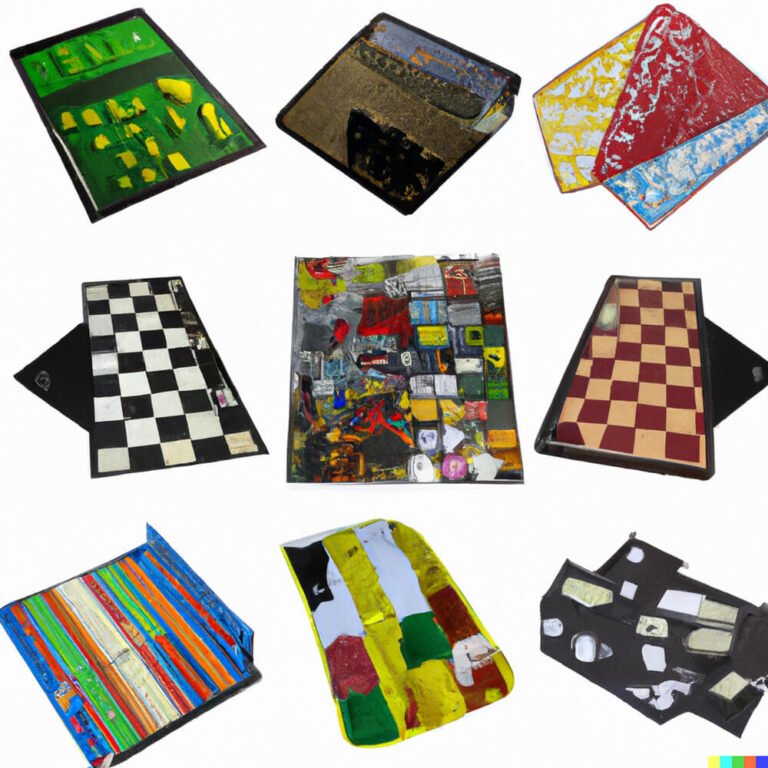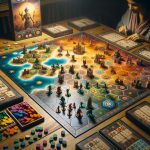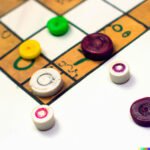Turn-based strategy board games have gained immense popularity in recent years, captivating both casual players and dedicated enthusiasts alike. These games offer a unique blend of strategic thinking, careful planning, and immersive gameplay that has captured the attention of gamers around the world. In this article, we will explore the allure of turn-based strategy board games, uncovering what makes them so appealing and how you can create your own.
A turn-based strategy board game is a type of game where players take turns making decisions and strategizing their moves. The game unfolds gradually, allowing each player the opportunity to carefully plan their actions before executing them. This deliberate pacing creates an environment that encourages critical thinking and tactical decision-making, making it a favorite among those who enjoy challenging mental stimulation.
In recent years, there has been a notable surge in the popularity of turn-based strategy board games across various demographics. This increase can be attributed to several factors, one being the rise in interest for tabletop gaming as a whole. As people seek to disconnect from digital screens and engage with others face-to-face, board games provide a tangible and interactive experience that fosters real connections between players.
Furthermore, turn-based strategy board games offer a deep level of engagement and replayability. With each game session presenting new challenges and opportunities for strategic decision-making, players find themselves drawn to these games time and time again. The satisfaction derived from outmaneuvering opponents through thoughtful planning creates a rewarding sense of accomplishment that keeps players coming back for more.
In the following sections, we will guide you through the process of creating your own turn-based strategy board game. From developing an engaging concept to designing mechanics that promote strategic gameplay, we will equip you with the necessary knowledge and tools to bring your vision to life. So whether you’re an aspiring game designer or simply looking to embark on an exciting creative project, let’s delve into the fascinating world of turn-based strategy board games.
Concept Development
Choosing a theme and objective is a crucial step in the development of a turn-based strategy board game. The theme sets the tone and atmosphere of the game, while the objective provides players with a clear goal to strive for. By carefully selecting an appealing theme and defining a meaningful objective, game designers can create an engaging experience that resonates with the target audience.
When choosing a theme for your turn-based strategy board game, it is important to consider the interests and preferences of your target audience. Think about what themes are currently popular or trending in the gaming community. For example, fantasy, sci-fi, or historical themes often have broad appeal and can attract a wide range of players. However, it’s important to strike a balance between creating something familiar and introducing unique elements that set your game apart.
Additionally, selecting a well-defined objective is crucial to providing players with a sense of purpose in the game. The objective should be challenging but attainable, motivating players to strategize and make thoughtful decisions throughout their gameplay. Whether it’s capturing specific points on the board, eliminating opponents’ pieces, or achieving certain milestones, the objective should align with both the theme and mechanics of the game.
| Concept Development Tips |
|---|
| Consider target audience interests |
| Align theme with mechanics |
| Create a challenging but attainable objective |
By carefully considering these factors during the concept development phase, game designers can lay a solid foundation for their turn-based strategy board game. A well-chosen theme and clear objective will not only attract players but also provide them with an engaging experience that keeps them coming back for more strategic gameplay.
Gameplay Mechanics
Gameplay mechanics are a crucial aspect of designing a turn-based strategy board game. These mechanics determine how players interact with the game, make decisions, and strategize their moves. In this section, we will explore the key considerations involved in designing movement and actions for your game.
Creating a Balanced and Strategic Movement System
One of the primary objectives when designing movement mechanics is to ensure balance and strategic depth. The movement system should offer players meaningful choices and tactical opportunities without becoming too complex or overwhelming. Consider the pace of the game and how movement impacts gameplay dynamics. A well-designed movement system can create interesting challenges for players to overcome while also allowing for creative strategies.
Different types of movement mechanics can be implemented, such as grid-based or hex-based movement. Grid-based systems divide the game board into equally-sized squares where units can move from one square to another. Hex-based movement uses hexagonal tiles instead, offering greater flexibility in unit positioning and creating more realistic movement patterns.
Diverse Actions for Engaging Gameplay
In addition to movement, actions play a crucial role in turn-based strategy games. The actions available to players should align with the theme and objective of the game while providing diverse options for decision-making. Examples of common actions include attacking enemy units, defending positions, using special abilities or spells, gathering resources, or completing objectives.
When designing actions, consider how they interact with other elements of gameplay. Are there any restrictions on when certain actions can be taken? Do different units have unique abilities that impact their actions? Strive for a balance between simplicity and complexity; too few options can limit strategic depth, while too many choices can overwhelm players.
By carefully crafting your game’s gameplay mechanics, you can create an engaging experience that challenges players’ strategic thinking while providing them with diverse choices and meaningful decisions to make on each turn.
Overall, successful gameplay mechanics in turn-based strategy board games strike a delicate balance between depth and accessibility. These mechanics should provide players with engaging and strategic decision-making opportunities while maintaining fairness and balance throughout the game. In the next section, we will explore how to establish a turn order and sequence to ensure a smooth gameplay experience.
Player Turns
In a turn-based strategy board game, establishing a clear order and sequence for player turns is essential. It ensures fairness, balance, and allows players to strategize effectively. The way player turns are structured can greatly impact the dynamics of the game and the strategies that players employ.
Turn Order
Establishing a turn order is crucial to prevent any bias or advantage given to certain players. There are a few different ways to determine the turn order. One common method is to use a randomized system, such as drawing cards or rolling dice, to determine who goes first. This adds an element of unpredictability and ensures that each player has an equal chance of going first.
Another approach is using a fixed turn order where players take turns in clockwise or counterclockwise order throughout the entire game. This method allows players to plan their moves accordingly and develop long-term strategies based on other player’s previous actions.
Simultaneous vs Sequential Play
When designing the gameplay mechanics, you have the option of implementing simultaneous or sequential play. Simultaneous play allows all players to take their turns simultaneously, creating a dynamic and fast-paced experience. It demands quick decision-making skills and adapts well to games with shorter playtimes.
On the other hand, sequential play involves each player taking their turn one after another in a predetermined order. This type of play allows for more strategic planning as players can observe and react to opponent moves before making their own decisions.
The choice between simultaneous and sequential play depends on your intended game experience. Simultaneous play encourages reactive strategies and fast gameplay while sequential play promotes thoughtful planning and careful consideration of each move.
Turn Duration and Actions
Determining the duration of each player’s turn is important for maintaining a balanced flow of gameplay. Turns that are too short may limit strategic options, while turns that are too long may lead to downtime for other players. It’s crucial to strike a balance that keeps all players engaged and allows them to execute meaningful actions within their turn.
Additionally, providing players with a variety of actions during their turns enhances the strategic depth of the game. These actions can include movements, attacks, defenses, using special abilities unique to each player, or interacting with various elements on the game board. Offering multiple options provides players with meaningful choices and allows them to adapt their strategies based on the situation at hand.
By establishing an order and sequence for player turns, board game designers can create an engaging and balanced gameplay experience. Whether through randomized turn order or fixed sequences, thoughtful consideration should be given to how the chosen turn mechanics will impact strategy and fairness.
The choice between simultaneous or sequential play also greatly affects the pace and depth of gameplay. Finally, determining turn duration and action options ensures that players have enough time and meaningful decisions within their turn to contribute towards their overall strategies.
Resources and Rewards
Creating a meaningful progression system is an essential aspect of designing a turn-based strategy board game. Adding resources and rewards to the gameplay not only adds depth and complexity, but also keeps players engaged and motivated. In this section, we will discuss how to create a progression system that allows players to progressively strengthen their position in the game.
One key component of creating a meaningful progression system is the introduction of resources. Resources can take various forms, such as currency, items, or even special abilities. These resources should be strategically valuable and carefully balanced to ensure fairness among players. For example, players may collect resources through successful actions or by controlling specific areas of the board. This resource management aspect adds an extra layer of decision-making and strategy to the game.
In addition to resources, rewards are another crucial element in creating a meaningful progression system. Rewards serve as incentives for players to achieve certain goals or milestones within the game. They can range from unlocking new abilities or upgrades for the player’s characters to providing advantages in future rounds or battles. Designing well-balanced and enticing reward systems keeps players invested in the game and gives them a sense of accomplishment as they progress.
To design an effective progression system, it is important to consider the pacing and balance of rewards throughout the game. Too many rewards too quickly can lead to imbalance and overwhelm players with power early on, while too few rewards may result in frustration and lack of motivation. Finding the right balance requires careful playtesting and iteration.
By implementing a well-designed progression system with valuable resources and rewarding achievements, you can create a turn-based strategy board game that offers layers of depth and engagement for your players. The sense of progress and growth will keep them coming back for more strategic challenges, ensuring an enjoyable gaming experience from start to finish.
Game Components
To create a turn-based strategy board game, it is essential to carefully craft the game components, including the board, pieces, and cards. These components play a crucial role in enhancing the players’ engagement and immersion in the game. Here are some key considerations and tips for crafting these components:
- Game Board: The game board serves as the central visual element of the game, providing players with a visual representation of the game world. When designing the board layout, consider incorporating terrain features or interactive elements that can impact gameplay strategically.
For example, terrain obstacles or bottleneck areas can add depth and challenge to movement decisions. Additionally, ensure that the board layout is clear and easy to understand, with distinct markings to indicate different areas or zones. - Game Pieces: The game pieces represent the various units or characters controlled by players during the game. When designing game pieces, consider factors such as art style, size, and functionality. Choose an art style that aligns with your chosen theme and appeals to your target audience.
Ensure that each piece is easily distinguishable from others on the board to avoid confusion during gameplay. Depending on your game mechanics, you may also want to include additional information on each piece (such as health points or special abilities) through symbols or text. - Cards: Cards can add an element of unpredictability and strategy to a turn-based strategy board game. Whether they represent resources, events, or special abilities/actions, it’s important to design cards that are visually appealing and easy to read. Consider incorporating relevant artwork or illustrations that enhance immersion in your chosen theme. Additionally, ensure that card text is clear and concise so players can quickly understand their effects without confusion.
Remember that consistency in design across these components is crucial for creating a cohesive gameplay experience. It’s important for all visual elements of the game – including colorschemes and fonts – to align with each other and create an immersive atmosphere.
By paying attention to the design and functionality of the game components, you can create a visually appealing and engaging turn-based strategy board game that captures the attention of players. These components, when well-crafted, can contribute to the overall enjoyment and strategic depth of your game.
Playtesting
Playtesting is a crucial step in the process of making a turn-based strategy board game. It allows designers to identify any flaws in the game mechanics and make necessary adjustments to ensure a balanced and enjoyable gameplay experience. Through playtesting, designers can gather valuable feedback from players and track data that will help them refine their game design.
To conduct effective playtesting sessions, it is important to have a clear objective in mind. Before testing the game, designers should establish what they want to learn or improve through playtesting. This could include evaluating the balance of different strategies, identifying overpowered or underpowered abilities, or assessing the overall difficulty level of the game.
When conducting playtests, it is essential to gather feedback from a diverse group of players. This can include both experienced gamers and newcomers. By involving players with different skill levels and perspectives, designers can gain insights into how different types of players engage with the game and adapt their design accordingly.
In addition to obtaining feedback, tracking data during playtests is also crucial for refining the game design. Data such as win ratios, average turn length, or player preferences can provide valuable insights into how the game functions in practice. This data-driven approach helps identify areas where adjustments may be needed and informs decisions about balancing resources, adjusting rules, or tweaking abilities.
It is important for designers to understand that playtesting is an iterative process. Based on the results gathered from playtests, adjustments should be made to address any issues identified. The revised version should then be tested again to assess whether the changes have successfully resolved any problems or improved gameplay.
By actively engaging in playtesting and continuously iterating on their designs based on feedback and data, designers can refine their turn-based strategy board game for balance and fun gameplay that will resonate with players.
Final Thoughts
In conclusion, once you have developed your turn-based strategy board game, it is crucial to share it with others and explore avenues to take it to the market. Feedback from other players can provide valuable insight into the game’s strengths and weaknesses, allowing you to make necessary adjustments for a more balanced and enjoyable experience. There are various ways to showcase your game, whether it’s through local gaming meetups or online communities dedicated to board games.
Sharing your game with others not only helps refine the design but also builds exposure and potential interest in your game. Local gaming meetups offer the opportunity to meet fellow enthusiasts and receive immediate feedback from people who share a passion for board games. Online communities such as forums or social media groups can expand your reach even further, connecting you with players from different backgrounds and experiences who may offer unique perspectives on your game.
Taking your game to market is an exciting prospect that opens up possibilities for wider distribution and recognition. You have two main options: self-publishing or pitching to publishers. Self-publishing allows you to retain creative control over your game but requires skills in marketing, manufacturing, and distribution.
Pitching to publishers involves presenting your game concept and prototype to established companies who can help bring it to a larger audience. Researching publishers that align with your game’s theme and mechanics can increase your chances of finding the perfect fit.
Frequently Asked Questions
What makes a turn based strategy game?
A turn-based strategy game is a type of game where players take turns to make decisions and carry out actions, usually within a larger strategic framework. Unlike real-time strategy games where everything happens in real time, turn-based games allow players to carefully plan their moves, analyze the current state of the game, and consider various tactics and strategies before executing their actions.
Turn-based strategy games often involve resource management, strategic positioning, combat planning, and long-term decision making.
Are strategy games hard to make?
Developing strategy games can be challenging due to several factors. First, balancing gameplay is crucial since strategy games require careful consideration of different variables like unit strengths, abilities, resources, and map design. Achieving this balance while keeping the game engaging and challenging can be difficult.
Additionally, creating AI that provides realistic opponents with diverse strategies adds another layer of complexity. Designing intuitive user interfaces for managing complex mechanics can also pose challenges. Overall, the complexity involved in designing intricate gameplay systems makes strategy games harder to make compared to other genres.
How do you create a game strategy?
Creating a game strategy involves considering multiple elements such as goals, rules, available resources, opponent behavior options, and potential outcomes. To create an effective game strategy, developers need to establish clear objectives for players to achieve within the game’s context.
They must then determine the rules that govern player interactions and provide them with specific actions or tools they can use towards their goals. Developers need to carefully balance challenge and feasibility to keep players engaged.

I love playing all kinds of games – from classics like Monopoly to modern favourites like Ticket to Ride.
I created this blog as a way to share my love of board games with others, and provide information on the latest releases and news in the industry.





